Jerry Lin

The Latest
-
Oil Prices Climb as EU Slashes Russian Crude Cap to $47.60 in Sweeping Sanctions
Crude oil prices rose Friday as the European Union finalized a new sanctions package targeting Russia's energy sector, including a steep cut to the Group of Seven's price cap on Russian crude. Brent futures climbed 73 cents, or 1.05%, to $70.25 per barrel, while U.S. West Texas Intermediate advanced 83 cents, or 1.23%, to $68.37. 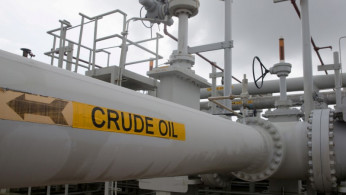
Crude oil prices rose Friday as the European Union finalized a new sanctions package targeting Russia's energy sector, including a steep cut to the Group of Seven's price cap on Russian crude. Brent futures climbed 73 cents, or 1.05%, to $70.25 per barrel, while U.S. West Texas Intermediate advanced 83 cents, or 1.23%, to $68.37. -
U.S. Retail Sales Rise 0.6% in June, Beating Forecasts Amid Tariff Pressures
Retail sales in the United States rose by 0.6% in June, beating economists' expectations and signaling continued resilience among American consumers even as tariffs imposed by President Donald Trump begin to push up prices on everyday goods, according to Commerce Department data released Thursday. 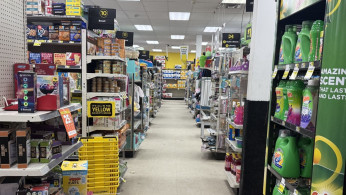
Retail sales in the United States rose by 0.6% in June, beating economists' expectations and signaling continued resilience among American consumers even as tariffs imposed by President Donald Trump begin to push up prices on everyday goods, according to Commerce Department data released Thursday. -
U.S. Producer Prices Flat in June Despite Tariff Pressures, Easing Fears of Near-Term Inflation Spike
The U.S. producer price index (PPI) remained unchanged in June, confounding economist expectations and signaling that tariff-related pressures on goods prices may be offset-for now-by softness in the services sector. The report, released Wednesday by the Bureau of Labor Statistics, showed no change in both headline and core wholesale inflation, compared to forecasts of a 0.2% increase. 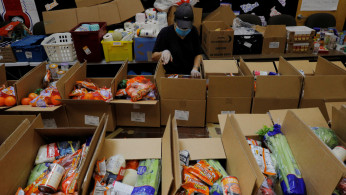
The U.S. producer price index (PPI) remained unchanged in June, confounding economist expectations and signaling that tariff-related pressures on goods prices may be offset-for now-by softness in the services sector. The report, released Wednesday by the Bureau of Labor Statistics, showed no change in both headline and core wholesale inflation, compared to forecasts of a 0.2% increase. -
China Posts 5.2% Q2 Growth as Exports Rebound, But Deflation and Youth Unemployment Persist
China's economy grew 5.2% in the second quarter from a year earlier, slightly above expectations, as exporters capitalized on a temporary trade truce with the United States. But fresh concerns about domestic demand, persistent deflation, and rising unemployment signal that momentum may be difficult to sustain without additional policy support. 
China's economy grew 5.2% in the second quarter from a year earlier, slightly above expectations, as exporters capitalized on a temporary trade truce with the United States. But fresh concerns about domestic demand, persistent deflation, and rising unemployment signal that momentum may be difficult to sustain without additional policy support. -
China’s Exports Surge 5.8% in June, Rare Earth Shipments Hit Record as Tariff Deadline Looms
China's exports surged 5.8% in June compared to a year earlier, defying expectations and setting a brisk pace for global shipments as Chinese firms rushed to beat the next round of U.S. tariffs set to take effect in August. According to Chinese customs data released Monday, the country's rare earth exports soared 60.3% to a record high of 7,742 tons, as buyers scrambled to secure critical materials ahead of new trade restrictions. The positive trade figures boosted China's CSI 300 index by 0.22% and lifted sentiment across Chinese financial markets. 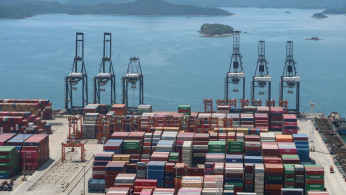
China's exports surged 5.8% in June compared to a year earlier, defying expectations and setting a brisk pace for global shipments as Chinese firms rushed to beat the next round of U.S. tariffs set to take effect in August. According to Chinese customs data released Monday, the country's rare earth exports soared 60.3% to a record high of 7,742 tons, as buyers scrambled to secure critical materials ahead of new trade restrictions. The positive trade figures boosted China's CSI 300 index by 0.22% and lifted sentiment across Chinese financial markets. -
Bitcoin Surges Past $122,000 as Congress Prepares Crypto-Friendly Legislation
Bitcoin soared above $122,000 on Monday, setting a new all-time high and cementing its position as 2025's best-performing asset, as U.S. lawmakers prepared to debate three major cryptocurrency bills that could alter the regulatory landscape for digital assets. 
Bitcoin soared above $122,000 on Monday, setting a new all-time high and cementing its position as 2025's best-performing asset, as U.S. lawmakers prepared to debate three major cryptocurrency bills that could alter the regulatory landscape for digital assets. -
Trump Imposes 30% Tariffs on EU and Mexico, Threatens Retaliation Doubling
President Donald Trump announced on Friday that the United States will impose a 30% tariff on all imports from the European Union and Mexico starting August 1, escalating trade tensions with two of the nation's largest partners. The move, revealed through formal letters posted to Truth Social, is part of a broader tariff campaign affecting more than two dozen countries and sectors. 
President Donald Trump announced on Friday that the United States will impose a 30% tariff on all imports from the European Union and Mexico starting August 1, escalating trade tensions with two of the nation's largest partners. The move, revealed through formal letters posted to Truth Social, is part of a broader tariff campaign affecting more than two dozen countries and sectors. -
Bitcoin Surges to Record $118,872 as ETF Inflows Hit $1.18 Billion, Crypto Stocks Rally Ahead of Congressional Hearings
Bitcoin soared to an all-time high Friday, surpassing $118,000 as institutional investors poured money into crypto-linked exchange-traded funds ahead of a pivotal week for digital asset legislation on Capitol Hill. The flagship cryptocurrency climbed as high as $118,872.85 and was last trading up 3% at $117,297.10, according to Coin Metrics. Ether followed suit, rising nearly 6% to $2,976.90 after breaching the $3,000 mark for the first time since February. 
Bitcoin soared to an all-time high Friday, surpassing $118,000 as institutional investors poured money into crypto-linked exchange-traded funds ahead of a pivotal week for digital asset legislation on Capitol Hill. The flagship cryptocurrency climbed as high as $118,872.85 and was last trading up 3% at $117,297.10, according to Coin Metrics. Ether followed suit, rising nearly 6% to $2,976.90 after breaching the $3,000 mark for the first time since February. -
Jamie Dimon Warns EU Is ‘Losing’ to U.S. and China, Flags Market Complacency on Tariffs and Rates
Jamie Dimon, CEO of JPMorgan Chase, delivered a stark warning to European policymakers and financial markets on Thursday, declaring that Europe is "losing" its competitive edge to both the United States and China while investors are increasingly ignoring economic red flags tied to trade, inflation, and monetary policy. 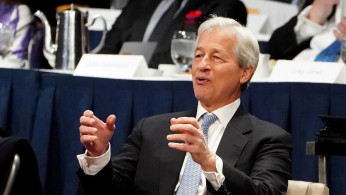
Jamie Dimon, CEO of JPMorgan Chase, delivered a stark warning to European policymakers and financial markets on Thursday, declaring that Europe is "losing" its competitive edge to both the United States and China while investors are increasingly ignoring economic red flags tied to trade, inflation, and monetary policy. -
Prices Begin Climbing as Trump’s Tariffs Hit U.S. Consumers
Prices on consumer goods ranging from toys to t-shirts are beginning to climb under the weight of President Donald Trump's aggressive tariff policies, with economists warning that the trend marks the early stages of broader inflationary pressure. 
Prices on consumer goods ranging from toys to t-shirts are beginning to climb under the weight of President Donald Trump's aggressive tariff policies, with economists warning that the trend marks the early stages of broader inflationary pressure.